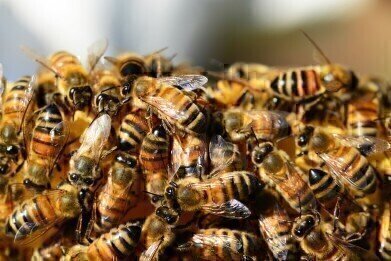Soil Remediation
Is Climate Change Behind the Decline in Long-Tongued Bees?
Oct 06 2015
Climate change – whether it is manmade or not – is most definitely a tangible process affecting our planet and all those organisms which call it home. Among the bee population in Colorado, this has manifested itself in a rather unusual way: by shortening the tongues of the local black-and-yellow residents.
A study conducted by Dr Nicole Miller-Struttmann from New York’s State University compared data taken between 1966 and 1980 with modern day findings to conclude that long-tongued bees really are in decline. According to Miller-Struttmann, climate change is the most likely cause.
Short-Tongued Bees Prosper
Due to rising temperatures brought about by climate change, Colorado’s alpine landscapes have enjoyed less diversity in their floral life. One casualty of the hotter summers is the type of deep-cupped flowers which many bumblebee species prefer. This has meant that the bees have no choice but to feed on shallower varieties in order to find sustenance, and shorter-tongued bees have prospered as a result.
Although the shorter-tongued bees cannot reach the nectar inside deep flowers, they generally have more potential food sources available to them and are more efficient in ingesting the nutrients from a variety of flowers.
In fact, a long tongue can actually be a hindrance for bees attempting to sip nectar from shallow flowers. Meanwhile, growing and maintaining a long tongue also places a small but significant energy demand on the bee, meaning that his shorter-tongued brethren is more energetic and equipped to deal with the rigours of competition for food.
Declining Overall Population?
It’s been well-documented that the global bee population has been in decline due to a variety of factors, including loss of habitat, climate change and the use of harmful pesticides such as neonicotinoids. However, Miller-Struttmann’s research was not able to conclusively say whether or not the overall bee population had been affected by the decline in longer-tongued species.
“We do not know the collection effort (the number of hours the scientists collected bees) for the past studies, so we cannot test for changes in total abundances,” she explained. “However, we do know that selection has demographic costs. It stands to reason that lower abundances of preferred flowers may result in fewer bumble bees, at least in the short term, until they are able to adapt to their shifting environment.”
Whether or not the general bee population is in decline, the sparsity of longer-tongued specimens is certainly bad for biodiversity as a whole. While deeper-cupped flowers are in short supply due to current raised temperatures, they also rely on the long-tongued bee for cross-pollination. Therefore, if the long-tongues do not make a resurgence, neither will the deep flowers – regardless of what happens to temperatures or with climate change.
“A morphological mismatch between the bumble bees and their preferred host plants could result in lower seedset, shorter flowers and potentially population declines in the long term. Many alpine plants are long-lived, so the effects of a potential change in selection may not be immediately apparent,” said Miller-Struttmann.
Events
May 05 2024 Seville, Spain
May 13 2024 Munich, Germany
May 23 2024 Beijing, China
May 23 2024 Beijing, China
Jun 10 2024 Algiers, Algeria













